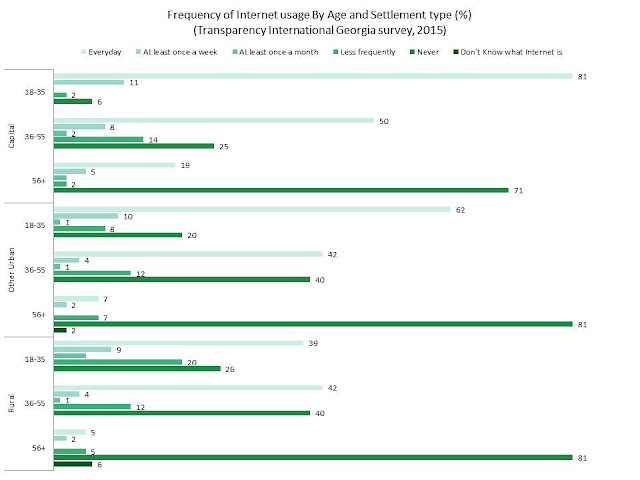Over the last month, a number of scandals have emerged on the Georgian media landscape. On August 7th, Rustavi 2, a national television station often associated with the previously governing United National Movement (UNM), had its assets frozen in response to Kibar Khalvashi’s claim that he was wrongfully denied his ownership rights of the station during the UNM’s governance. More recently, cancellation of two political talk shows was announced on Imedi TV, another national station, owned by Badri Patarkatsishvili’s family. Imedi later stated that it was not cancelling the talk shows. Two weeks ago, it was announced that two more political talk shows face cancellation (see here and here). Suspicions have been voiced that these cases are related to the upcoming 2016 Parliamentary elections. Considering the recent scandals, an understanding of how Georgians view journalists is important as the public’s view of them proxies the public’s trust in the media they consume. This blog post takes a look at attitudes towards journalists reported during the May 2015 Transparency International – Georgia public opinion poll, conducted by CRRC-Georgia.
On the whole, Georgians are quite ambivalent about journalists. To start, more than half of the Georgian population reports that they neither trust nor distrust journalists. This response is more or less equally characteristic for various segments of Georgian society, with roughly half of the representatives of every education level, age group, settlement type, and gender reporting so. Slight differences are present – those with at least some tertiary education, the young, and Tbilisi residents are all slightly less trusting of journalists than those who are less educated, older, and live outside the capital. Georgians report neither trusting nor distrusting journalists more often than representatives of any of the other professions or institutions asked about on the survey, including judges, police, doctors, teachers, NGOs, the President, Parliament, Prime Minister, and local government. Slightly more Georgians, though, report trusting journalists than distrusting them (25% versus 18%).
Note: The original five-point scale was recoded into a three-point scale. “Fully trust” and “Trust” were combined into the category ‘Trust’ on the chart above, while “Fully distrust” and “Distrust” were combined into ‘Distrust.’ “Neither trust nor distrust” was not recoded. Education levels were also recoded. ‘Secondary or lower’ includes individuals with only primary education, some secondary education, and completed secondary education. ‘Tertiary education’ includes those with some higher education, Bachelor’s degrees, Master’s degrees and PhDs. ‘Secondary technical’ education was not recoded.
The wide spread “neither trust nor distrust” attitude must in part stem from the perception that journalists in Georgia lack independence and are not working with the average person’s interests in mind. Half of the Georgian population believes that “Georgian journalists, as a rule, protect the political interests of the owners of media outlets,” though different people may have different attitudes to this issue. In addition, only a third of the public agrees with the statement that “Georgian journalists, as a rule, represent the interests of people like [me]”, and 32% agree with the statement that “Georgian journalists cover events superficially”. On a bright note, however, twice as many Georgians agree with the statement “Georgian journalists are highly professional” compared with those who disagree.
Note: Originally, the responses were recorded on a five-point scale where code 1 meant “Fully disagree” and code 5 meant “Fully agree“. For the chart above, codes 1 and 2 were combined into ‘Disagree’ and codes 4 and 5 were combined into ‘Agree.’ ”Neither agree nor disagree” was not recoded.
The findings suggest the journalists in Georgia need to work with the interests of ordinary people, not the owners of media outlets, in mind. If they do so, the population’s trust towards them will likely increase. To learn more about Georgians’ attitudes towards the media, have a look at the findings of the Media survey in Georgia here.







































